Identify Squeaky Areas
Walk up and down the staircase, noting any squeaky steps and marking them with tape. Gently rock from side to side and forward and backward to determine whether the squeak comes from the front (loose from the riser) or back/side (loose at the stringer).
To effectively locate squeaks:
- Mark squeaky steps with tape or sticky notes
- Apply weight to likely spots by stepping down firmly
- Enlist a helper for extra weight and an additional ear
Move side to side and back and forth on each step. If the front squeaks, the tread is likely loose from the riser. Squeaking from the back or side indicates a stringer issue.
Look closely where the wood rubs together. Use a hammer to locate stringers if they're not visible. Duller sounds indicate their location.
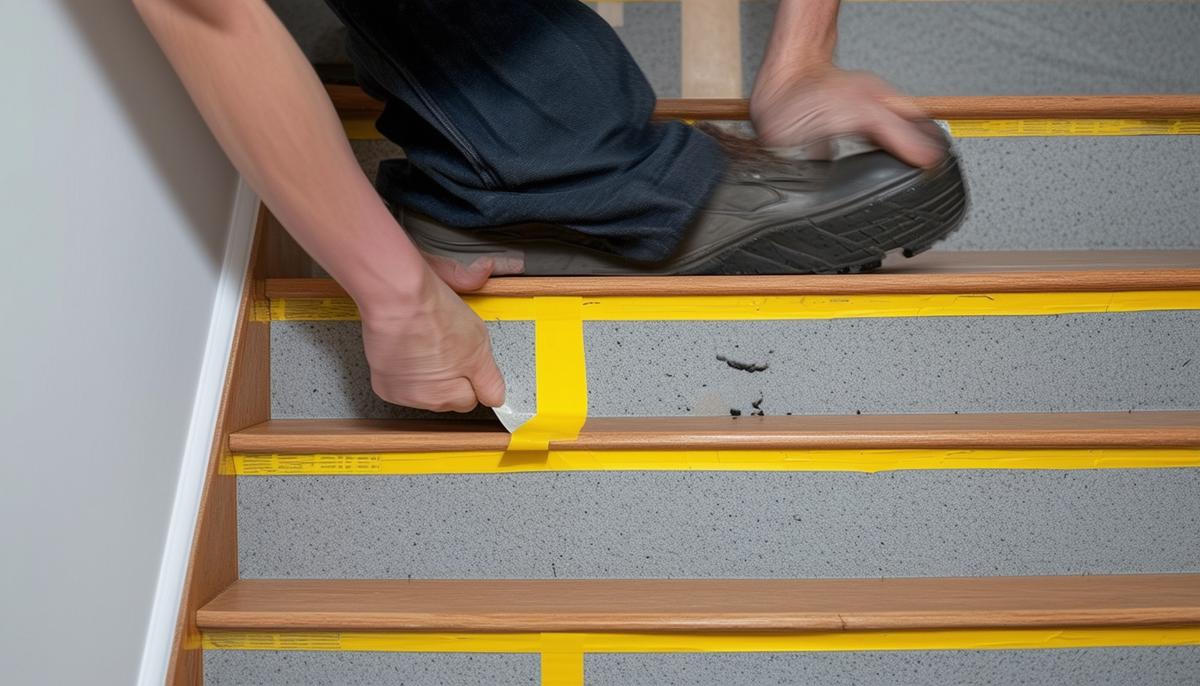
Lubricate Noisy Joints
Choose a dry lubricant like powdered graphite or talcum powder. Avoid oil-based options as they can warp the wood and attract dust. Pour a small amount of powder onto a piece of paper and carefully apply it to the crack between the tread and the riser.
Use a finger or brush to work the powder deep into the crack. If possible, have a helper press down on the squeaky tread while you apply the powder to ensure it reaches all the necessary areas.
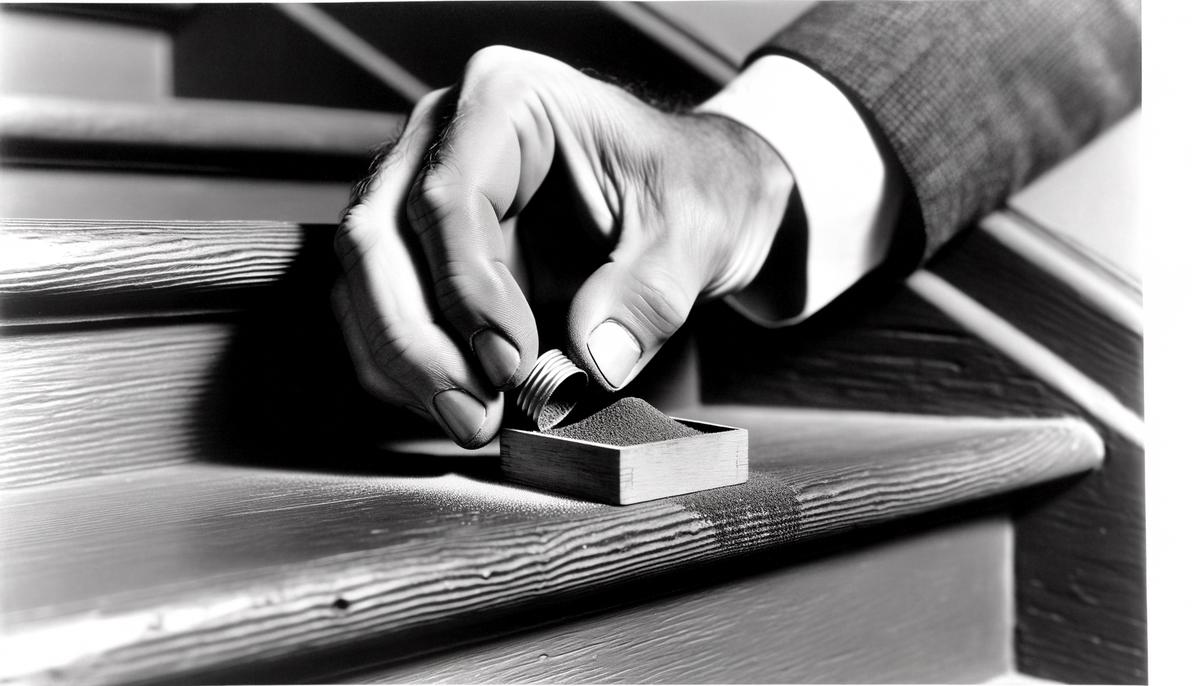
Secure Loose Treads and Risers
For securing treads with screws:
- Drill pilot holes slightly smaller than your screws, evenly spaced across the front of the tread where it meets the riser.
- Use #8 screws, driving them in just below the tread's surface.
- Fill the screw holes with wood filler that matches your tread color.
If using nails:
- Make two small pilot holes on the side of the tread near the wall, spaced about two inches apart and angled at 45 degrees in opposite directions.
- Use 8d or 10d nails (2½ to 3 inches long).
- Drive the nail heads slightly below the surface with a hammer and nail punch, then cover with wood filler.
For exposed stairs, consider adding molding or a quadrant for both function and aesthetics. Glue it to the top or bottom of the riser and pin it into place.
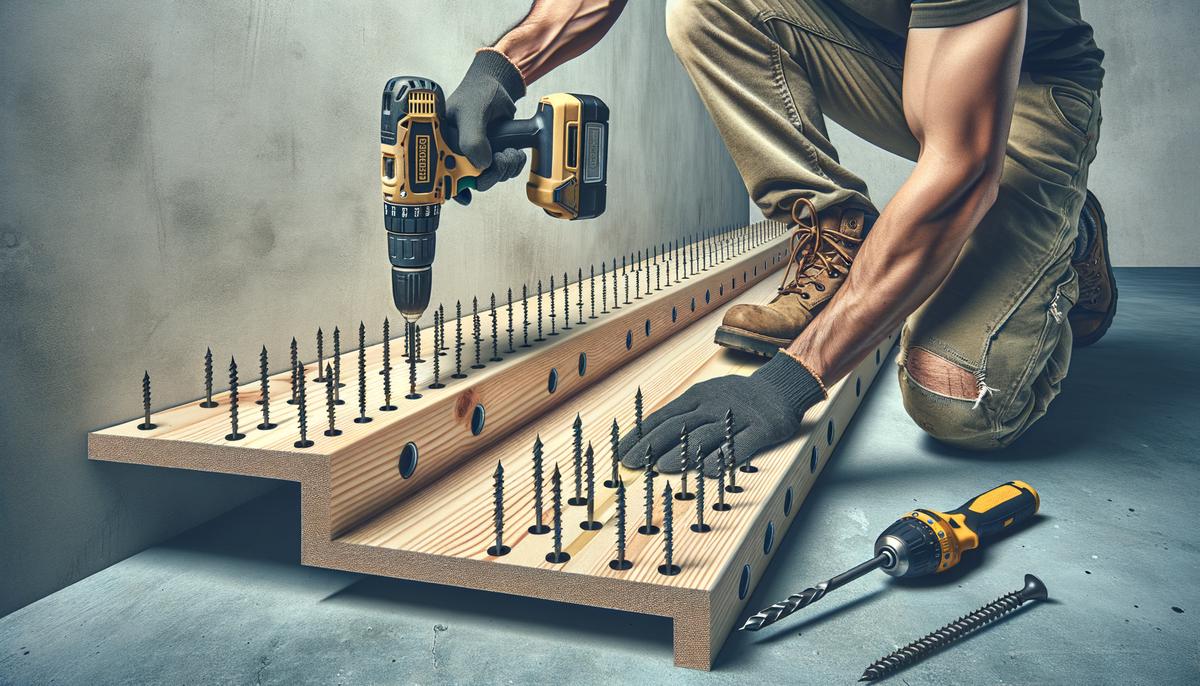
Repair From Underneath
To fix squeaks from beneath the stairs, use glue blocks. You'll need:
- Wood glue
- Triangular glue blocks
- A drill
- Screws
Installation process:
- Apply wood glue to the two shorter sides of the glue block.
- Press it firmly into the angle where the tread meets the riser.
- Drill pilot holes through the blocks, one horizontally into the riser and another vertically into the tread.
- Secure with screws.
Place glue blocks at key points along the stair—typically one in the center and one at each end. For wider stairs, add extra blocks for additional support.
Let the glue dry completely before using the stairs. This usually takes a few hours, but overnight is ideal if possible.
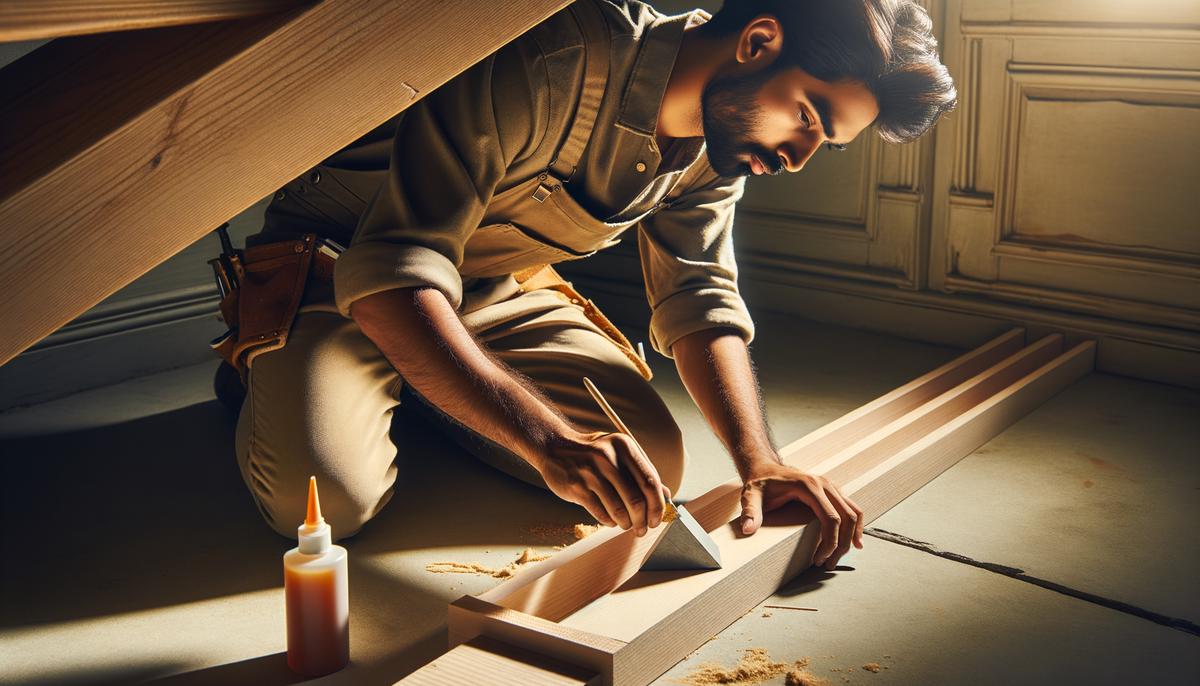
Fix Carpeted Stairs
For carpeted stairs, use a specialized squeak repair kit. These kits include screws that snap off beneath the carpet, leaving no visible trace.
Steps to fix carpeted stairs:
- Locate the squeak by walking on the stairs and pressing firmly with your foot. Mark the spot with a sticky note.
- Position the depth control jig (included in the kit) over the squeaky spot.
- Insert a special screw into the provided drill bit and carefully drive it through the carpet into the stringer or riser below.
- Once the screw is in place, use the jig to snap off the screw head.
- Repeat this process for each squeaky spot, spacing the screws evenly if fixing multiple spots on the same step.
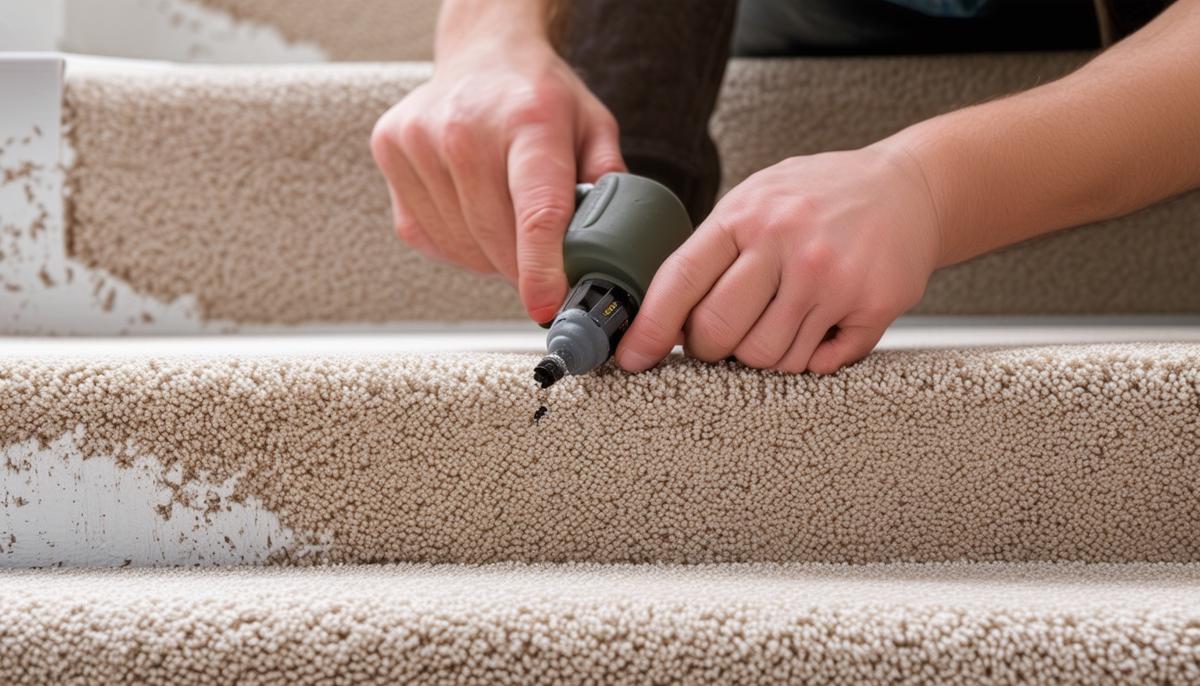
With these fixes applied, you should have a quieter and more stable staircase. Remember to call a professional if you encounter any issues beyond your skill level.
- Fisette P. Controlling Stair Squeaks. Building and Construction Technology, UMass Amherst. 2015.
- Truini J. How to Fix Squeaky Stairs. Popular Mechanics. 2017.
- Holmes M. Make It Right: Inside Home Renovation with Canada's Most Trusted Contractor. HarperCollins Publishers Ltd; 2011.
